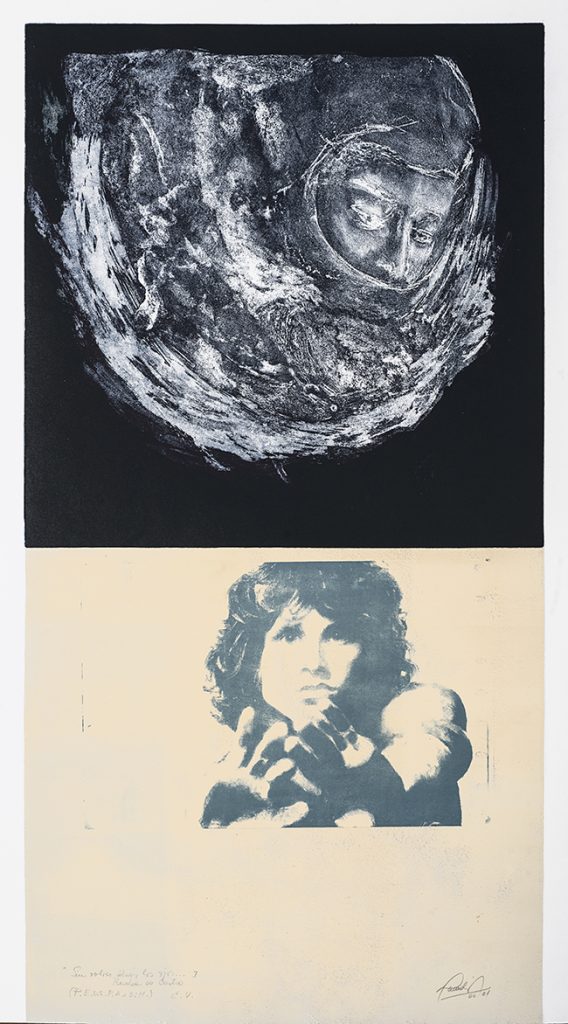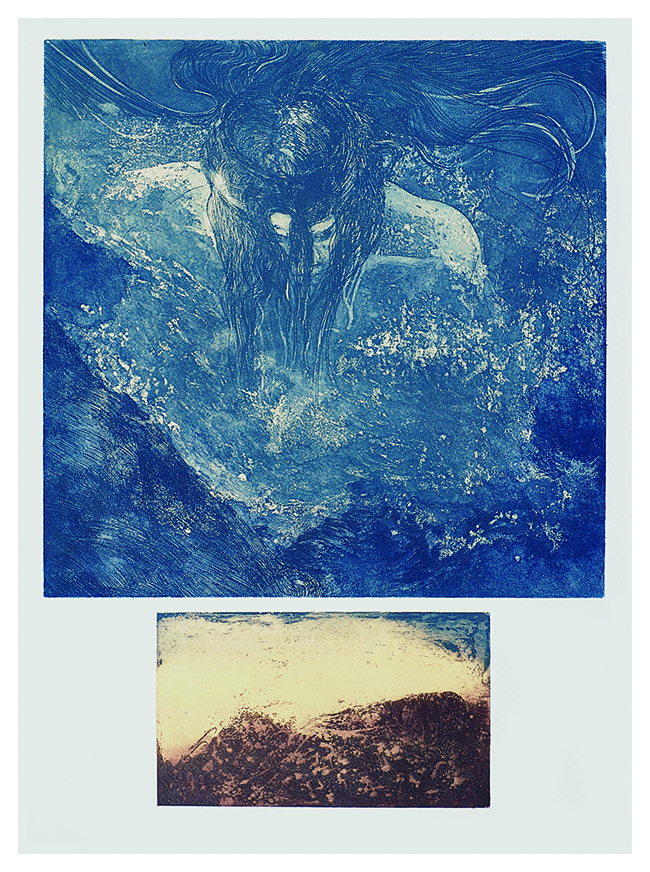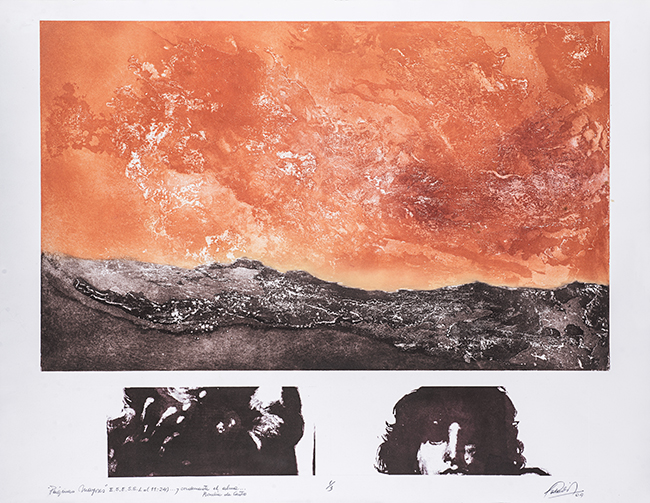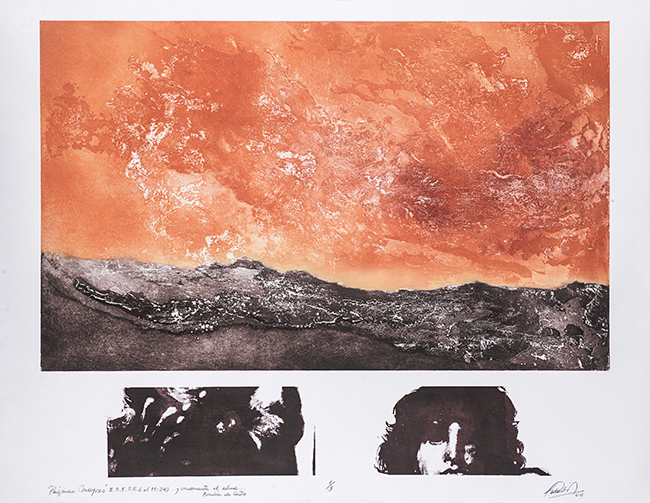Lidia Paladino works with intention. Based in Argentina, she’s known for engraving and drawing, but her earliest explorations were rooted in textiles. Working with fabric and thread taught her how to slow down. She learned to listen to the process—one that demanded repetition, texture, and time. That early attention to touch and surface stayed with her, even as she pivoted back to engraving.
Returning to printmaking wasn’t just a matter of switching techniques. It was a deeper commitment—to craft, to image, to meaning. Over the years, her practice has grown into something grounded and patient. In 2003, she received Argentina’s First Municipal Prize for Engraving, but the real achievement is the quiet consistency of her output. Her works aren’t bold declarations—they’re thoughtful records. Each one feels like something unearthed rather than produced.

Paladino doesn’t create scenes or tell stories outright. Her pieces float in the space between thought and feeling. In “Sin volver atrás los ojos, ni mirar hacia adelante” II (2006), she presents that idea plainly. Etching, burin, poupée, and slurry techniques come together in a 70 x 50 cm print that resists direction. The translated title—“Not looking back, not looking ahead”—reads like a refusal to move. And that’s the point. The image doesn’t push. It holds.

Alongside the phrase, “Have the time to develop good thoughts,” the work becomes almost meditative. A still image that carries its own pause. The details are subtle. You might miss them at first. But the longer you stay with it, the more it seems to slow you down. That’s where her voice is—in the restraint, in the unhurried decisions.

In “Instantáneo y Fugaz” (2005), the balance shifts. Same size, same methods, but the tone is different. “Instant and Fleeting”—that’s the title. The supporting line: “A vision of man. Whether he emerges or sinks.” It’s a portrait of uncertainty. Not in dramatic terms, but in the quiet tension between rising and falling. You can’t quite place the figure—if there is one. That ambiguity is what gives the piece its weight. It drifts just below the surface.
Paladino often works this way—pushing against clarity without abandoning structure. Her use of the buril (engraving tool) leaves behind small, precise marks. The ink, applied by hand through the poupée process, softens the result. These aren’t prints made for mass production. They feel more like handwritten notes—careful, reworked, and full of pauses.
“Páginas mayores – Y condenaste el alma” (2004) takes that even further. It’s larger—63 x 78 cm—and incorporates offset printing with her usual etching and poupée techniques. The title loosely translates as “Major pages – And you condemned the soul.” The accompanying phrase is stark: “Man condemns himself throughout.” But the piece doesn’t shout. It stays still, almost solemn. It’s less about accusation and more about recognition. As if we already know what’s been done.
The visual texture feels layered, like a book left open in the rain. Everything looks a little worn, like the plate has carried the weight of its message. It doesn’t tell you what to think—it just sits there, unresolved. And that’s enough.
What ties these works together isn’t just technique—it’s time. Not studio time or deadlines. Real time. The kind you feel in your chest. The kind it takes to shape an idea, erase it, start over, and let the image emerge slowly. Paladino’s pieces ask you to meet them there—in the stillness.
They don’t perform. They don’t demand. But if you give them space, they offer something back. A quiet reflection. A place to land. A thought worth carrying.

